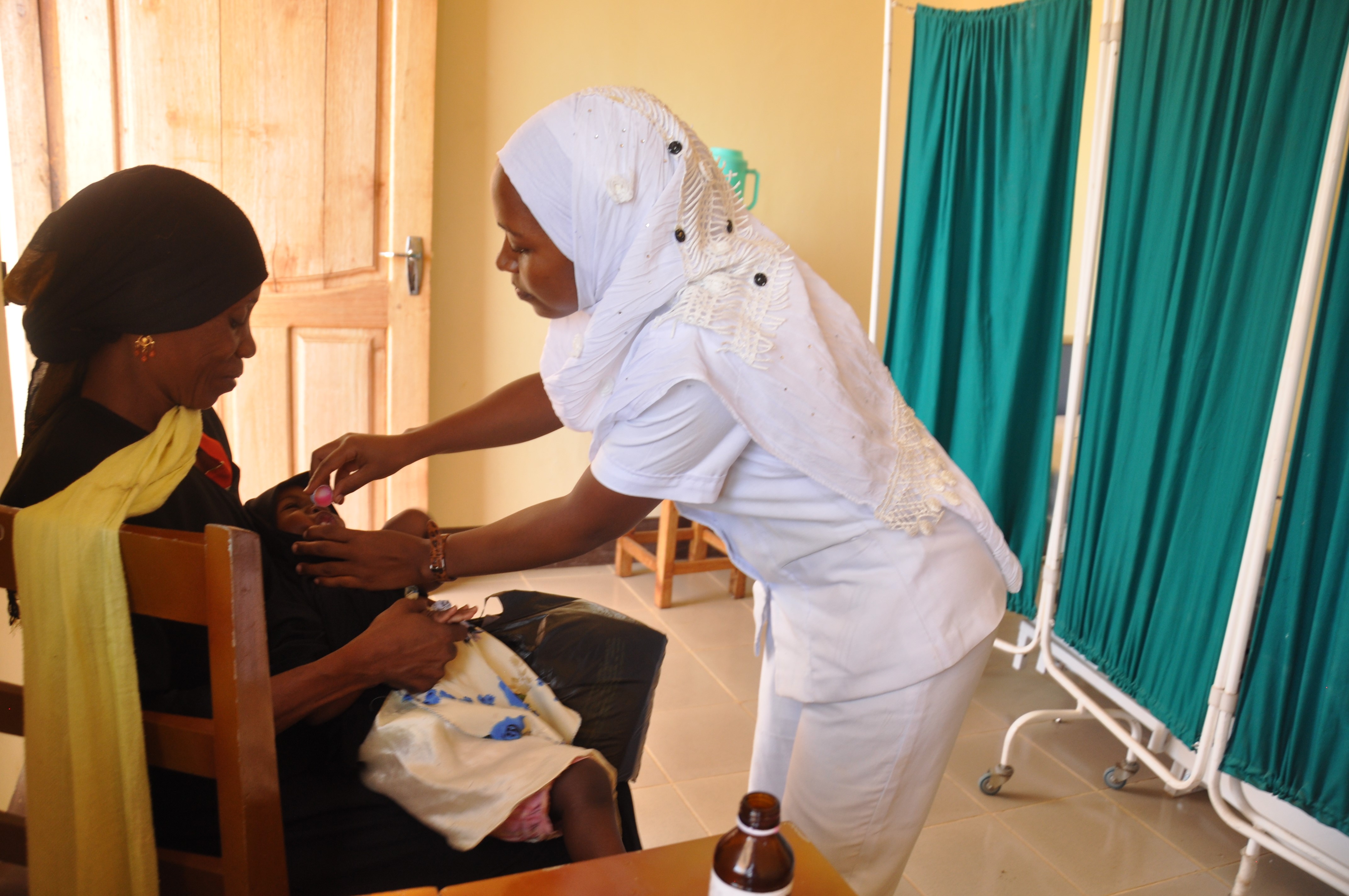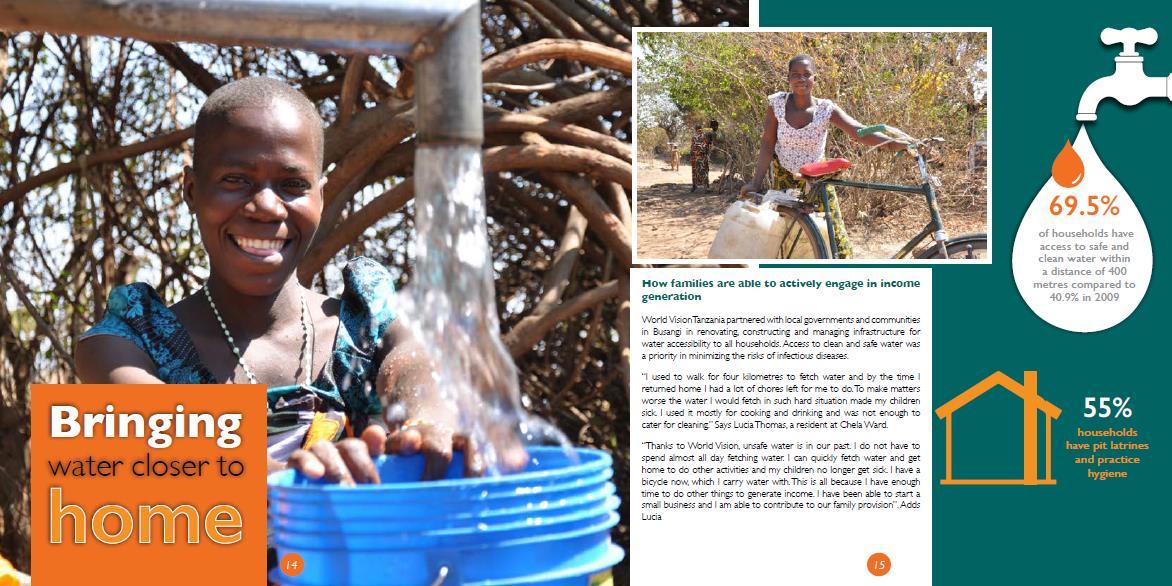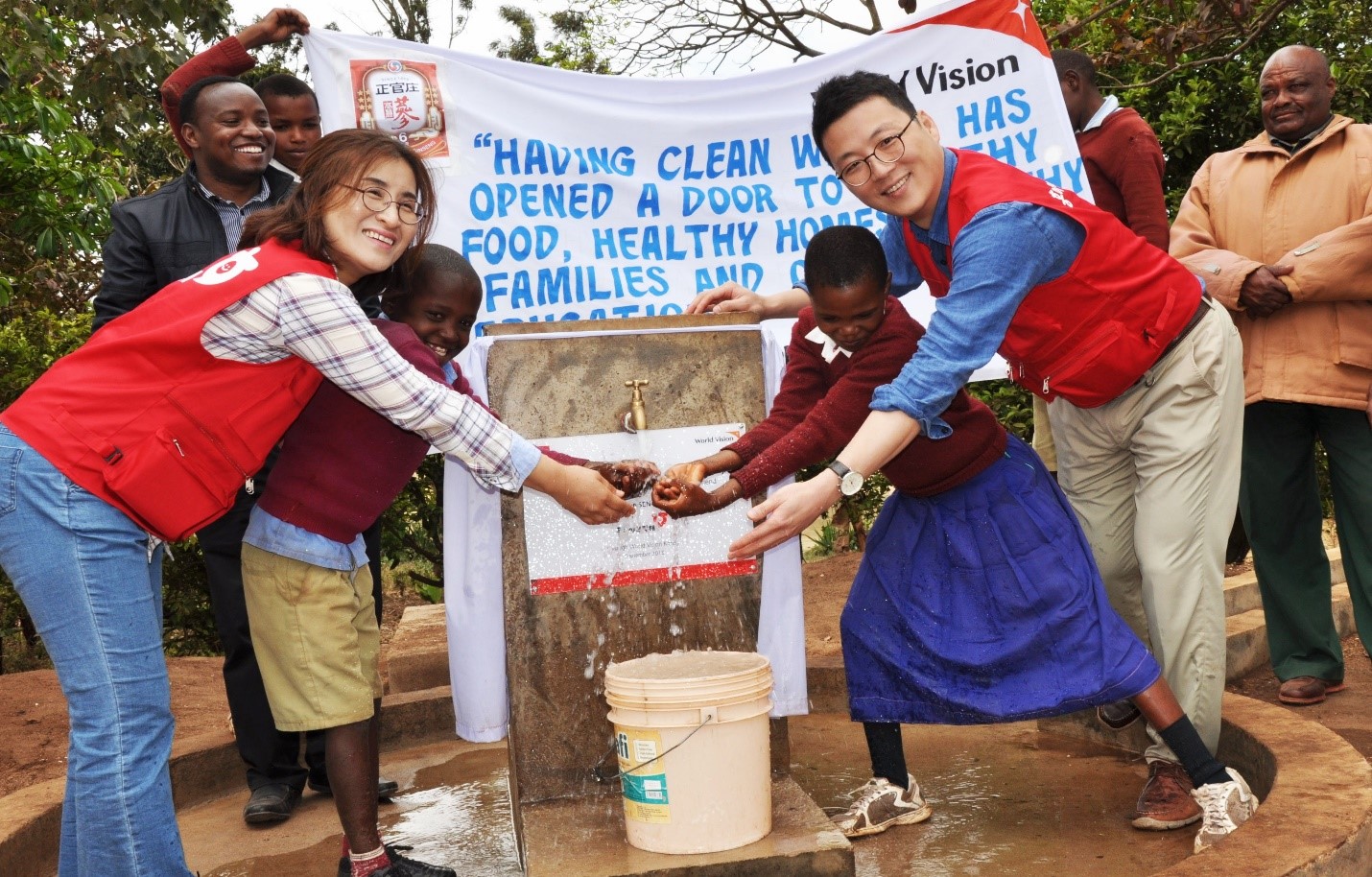Health, Nutrition and WASH
Our Goal
We want to ensure that households and communities are empowered for sustainable access and utilization of strengthened maternal, newborn and child health and nutrition systems for the well-being of children by 2020. We are working towards this by:
Equipping parents/caregivers with food preservation and feeding knowledge and skills
-
Equipping community resource persons, extension workers, government service providers with knowledge and skills to promote Maternal, Infant and Young Child nutrition practices and services
-
Equipping community structures and peer support groups with knowledge and skills on good nutrition practices.
-
Empowering existing community groups /committees on Citizen Voice and Actions and advocate for health services depending on the contextual needs of the community
-
Ensuring that children, mothers and pregnant women have access to HIV prevention, care and treatment services
-
Improving access to age-appropriate nutrition and health care in emergency settings for pregnant women, lactating, children under-five and other vulnerable groups
What is the problem?
Tanzania is facing high rates of chronic malnutrition in which 34% of the children are stunted, inappropriate infant and young child feeding practices which lead to high levels of underweight and wasting, high infant, maternal and under-five mortality rates, and inadequate delivery of health service in the rural areas. All these have placed a burden in many rural families where poverty is more intensified and the most vulnerable groups like children, pregnant and lactating women and other groups are more affected.
How is World Vision addressing the issues?
We are equipping service providers in health facilities, community health workers, parents/caregivers, CVA teams and other local partners in the community with appropriate knowledge, skills, materials and other technical know-how that is needed to reduce the burden of health and nutrition problems which the country is currently facing by using different training models such as ttC 7-11 interventions(integrated maternal newborn and child health training to community health workers), Positive Deviance Hearth, COMMs, Channels of Hope Maternal, CMAM
Is what World Vision doing working?
Yes! More children are receiving age-appropriate nutrition, health and other appropriate care needed for them to thrive and survive as a result of training to parents/caregivers both in the household settings and refugees camps, more health facilities (dispensaries and health centers) in the districts which the WVT is operating have been equipped with health system strengthening, community health workers and CVA teams have been empowered and they are taking an active role in mobilizing and advocating for improved health-seeking behaviours in the community, and more partnering and collaboration is seen among WVT and other stakeholders implementing health and nutrition in the country.
What's the Impact?*
*Numbers Based on 2016-2017
- 340 community health workers were trained on community maternal newborn care.
- 385 nutrition counselling groups were formed.
- 16,161pregnant women and new mothers were reached with health and nutrition messages.
- 13,475 women (69.6% of total) gave birth to their youngest child at health facilities.
- 7,552 orphans and vulnerable children were supported with clothing and schooling.
- 11,533 pregnant women (94.6% of total) were were offered and
accepted counselling and testing for HIV
Our Goal
Increased access and utilization of portable water and appropriate hygiene and sanitation by 2020.
Primary targets
-
Increased access to sustainable and safe water supply for poor, vulnerable communities and children
-
Increased access to improved sanitation for poor, vulnerable communities and children
-
Improved knowledge in hygiene promotion and behavior change practices for poor vulnerable communities and children
-
Communities and local government empowered to facilitate sustainable WASH interventions and services
World Vision Tanzania aims to improve health status for children and their families especially most vulnerable communities by:
-
Increasing the number of people who get access and utilizing safe drinking water in community, school and health facilities.
-
Increasing the number of people who get access and utilizing improved sanitation and hygiene facilities including proper hand washing and water treatment. Hand washing with soap, alone, has the highest impact on reducing waterborne disease transmission, including diarrhea, lowering the condition by about 47 per cent and sanitation intervention has the second highest impact on reducing diarrhea, decreasing the impact by about 36 per cent.
-
To Empower community and local government to facilitate sustainable WASH interventions and services
What is the problem?
Up to one-third of deaths in children under five years in Tanzania are related to poor access to clean and safe drinking water and poor hygiene and sanitation practices. This includes nearly 20 per cent of under-five deaths due to preventable diarrhea. World Vision Tanzania partner with Government to increase access and utilization of safe drinking water and well as hygiene and sanitation facilities to improve the health of children including most vulnerable ones.
How is World Vision addressing the issues?
World Vision partnership with government to achieve Sustainable Development Goal by 2030. Most of WASH intervention focus on equipping community in the management of their WASH services for ownership and sustainability.It uses the government policy such as water policy and WASH in HF guidelines to align itself in the government effort of increasing the number of people get access and utilizing an improved source of water as well as hygiene and sanitation facilities.
World Vision Tanzania uses a participatory approach to increase community ownership on WASH projects, community are involved from initial stages of the projects and engaged on all steps of implementation and supervision of the projects for ownership and sustainability. Local artisans are trained on sanitation technology and sanitation marketing. COWSO groups are formed/ activated for effective management of water sources at the community level.
Is what World Vision doing working?
Yes, since vulnerable people including children and women get access to clean drinking water, hygiene and sanitation facilities in their community, schools and health facilities. Water are used both for domestic and irrigation purpose. Women save the time used to fetching water and engaging their time for doing other family and economic activities, children got water in their school environment, they use most of their time for studying and e]hence living in health and comfortable learning environment. Girls attend school instead of going to help their mother in fetching water and school environment is comfortable for them during their menstrual period. Water treatment and proper hand washing reduce the burden of communicable disease by 47 %. For sustainability, communities are equipped to manage their water resources via COWSO and Local artisan who practices sanitation marketing in their communities.
Our FY17 achievements
-
Increased access to sustainable and safe water supply for poor, vulnerable communities and children
-
Increased access to improved sanitation for poor, vulnerable communities and children
-
Improved knowledge in hygiene promotion and behavior change practices for poor vulnerable communities and children
-
Communities and local government empowered to facilitate sustainable WASH interventions and services
-
Increasing the number of people who get access and utilizing safe drinking water in community, school and health facilities.
-
Increasing the number of people who get access and utilizing improved sanitation and hygiene facilities including proper hand washing and water treatment. Hand washing with soap, alone, has the highest impact on reducing waterborne disease transmission, including diarrhea, lowering the condition by about 47 per cent and sanitation intervention has the second highest impact on reducing diarrhea, decreasing the impact by about 36 per cent.
-
To Empower community and local government to facilitate sustainable WASH interventions and services
- 40 water sources were safeguarded.
- 84 km of pipeline and 92 domestic water points were constructed.
- 92,556 households were accessing potable and reliable water sources.
- 79 community-owned water supply organizations were established to oversee the maintenance and sustainability of water sources.
- 96,911 people were reached on sanitation and hygiene awareness.
- 2,380 households built improved latrines.
- 54 latrines were built for primary schools.
- 137 school WASH clubs were formed and trained.





